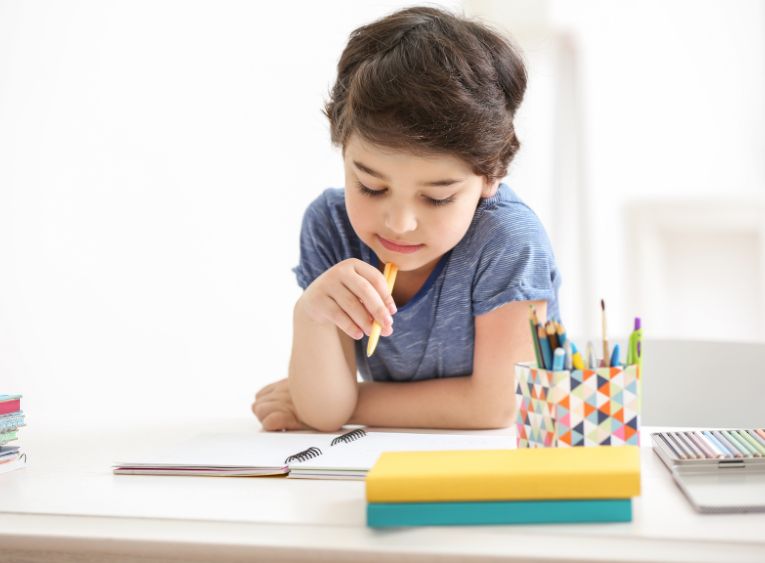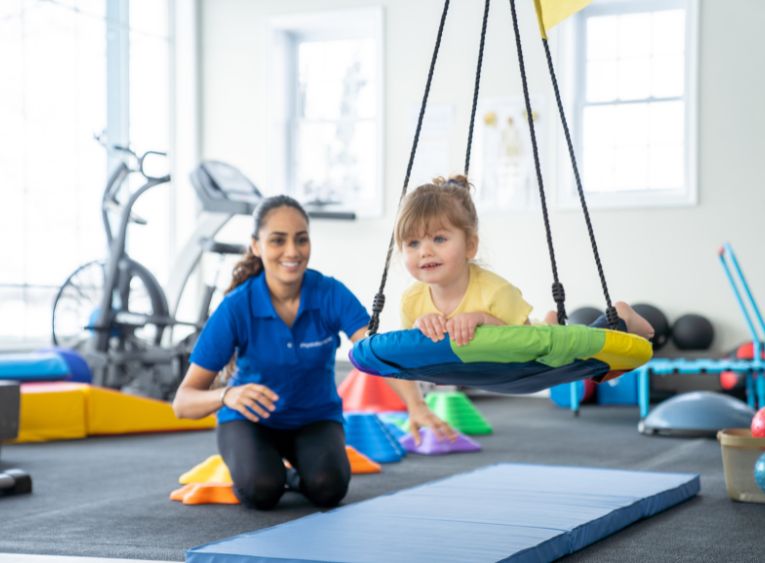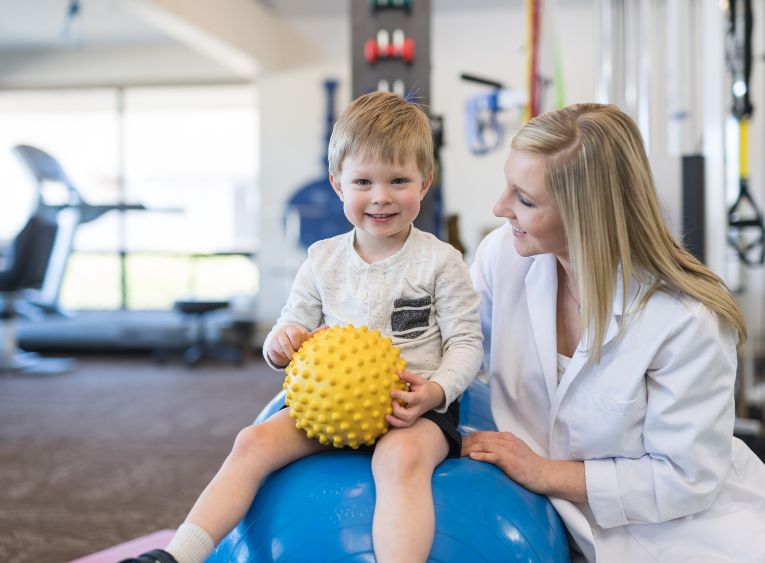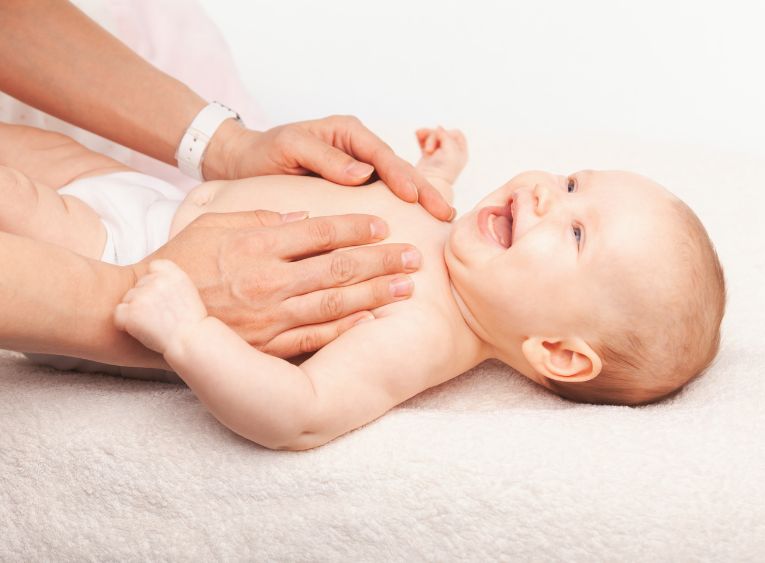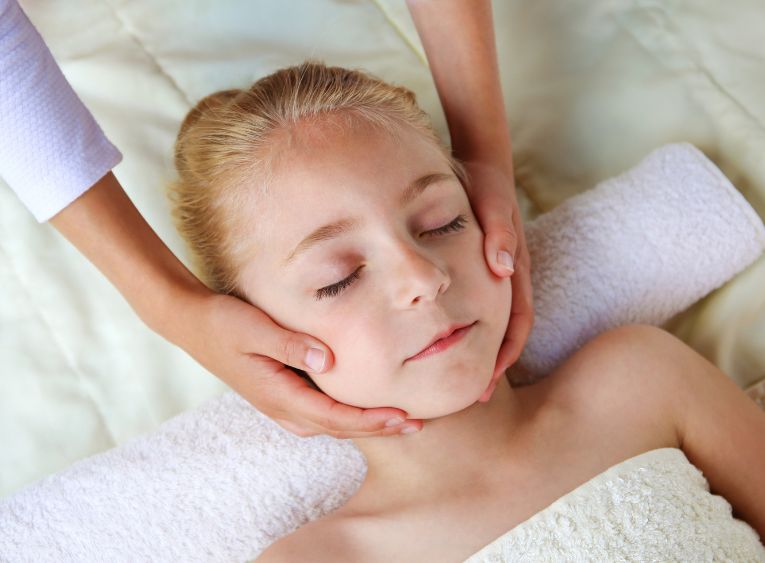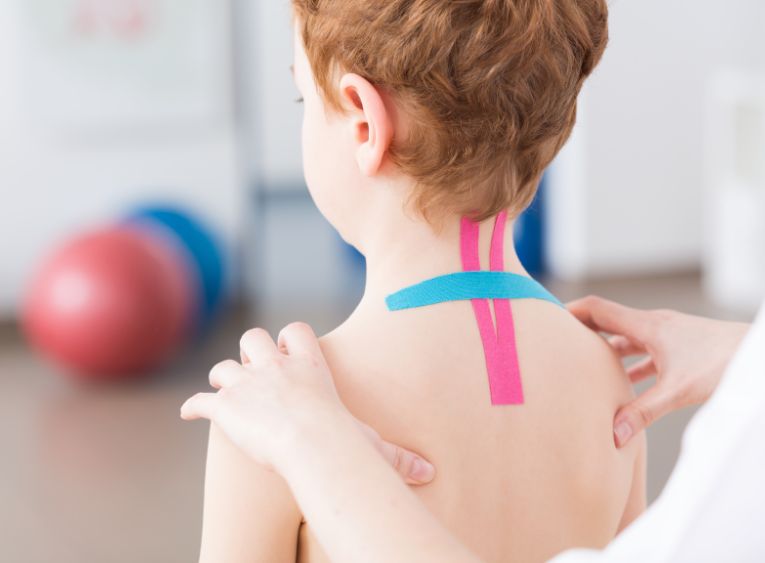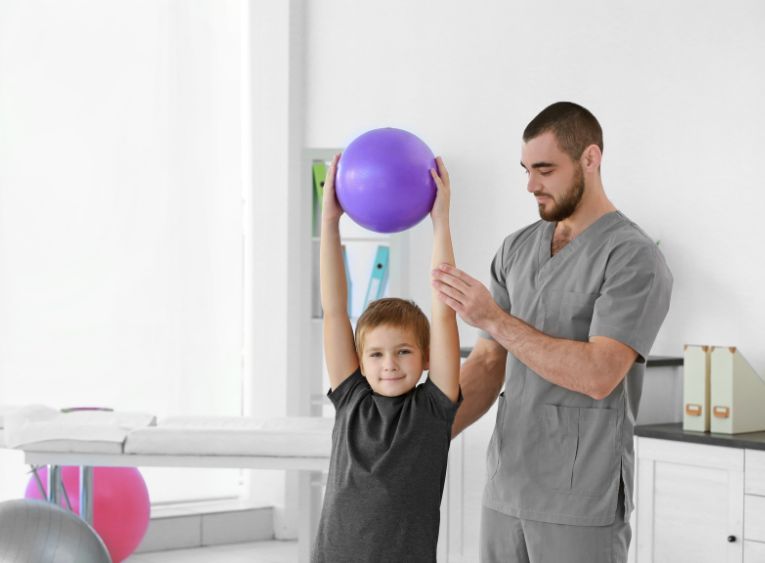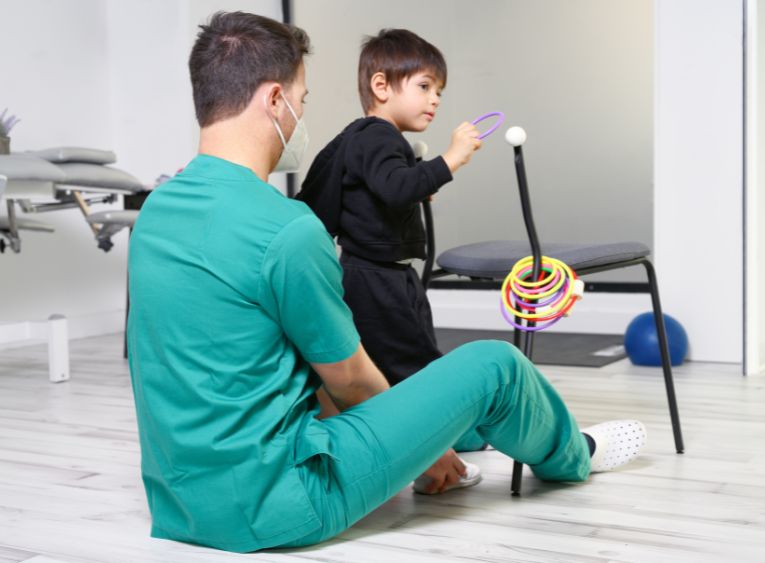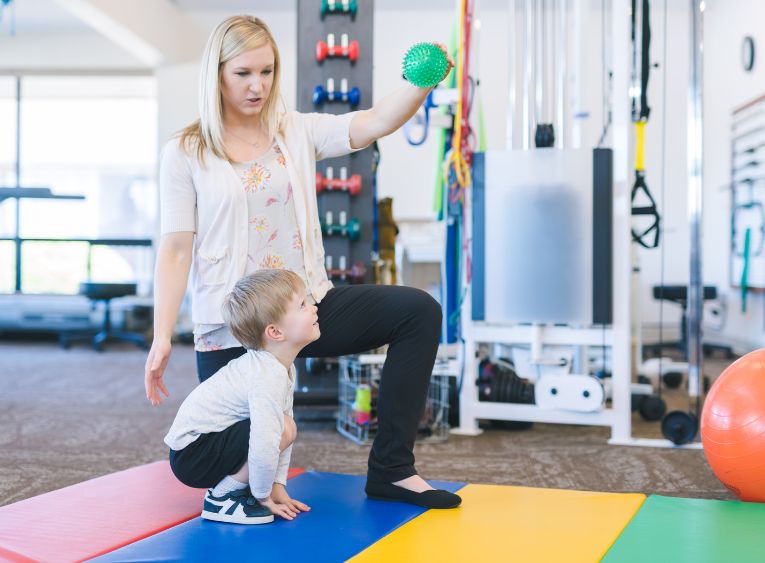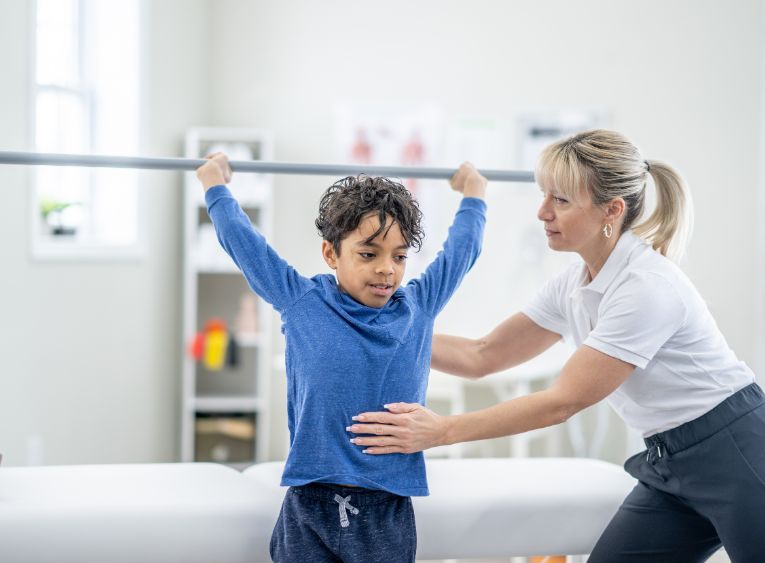Dyskinesia in Children
What is Pediatric Dyskinesia?
Dyskinesia in children refers to the occurrence of jerky, uncontrolled body movements. These rapid motions are purposeless and disrupt normal movement or posture.
What Causes Dyskinesia in Children?
Jerky movements in children can arise from various factors, including:
- Impairment or Damage: Damage to specific areas of the brain responsible for controlling movement.
- Chemical Abnormalities: Changes in brain chemicals, such as reduced dopamine levels, can slow down the transmission of messages from the brain to the muscles, causing delays or irregularities in movement.
Conditions that may lead to dyskinesia include:
- Athetoid Cerebral Palsy
- Angelman Syndrome
- Wilson’s Disease
Schedule an appointment with one of our Pediatric Physiotherapists today to learn how we can help you.
Types of Dyskinetic Movements in Children
Several types of movements can occur as a result of dyskinesia, including:
- Chorea: Fast, non-rhythmic, uncontrolled jerky movements primarily affecting the arms and legs, but it may also involve the hands, feet, trunk, neck, and face.
- Ballism: Similar to chorea, but characterized by larger, more explosive movements involving more of the arm or leg, often resulting from a cerebrovascular event.
- Myoclonus: Sudden, brief, shock-like involuntary muscle contractions that may occur as single jerks or in repetitive sequences. Unlike tics, myoclonic jerks cannot be controlled, even momentarily.
- Dystonia: Involuntary sustained or intermittent muscle contractions that result in twisting and repetitive movements or abnormal postures, giving a rhythmic appearance to the movements or causing a fixed posture.
- Tics: Repetitive stereotyped movements that can be initiated voluntarily but can also be suppressed intentionally for short periods.
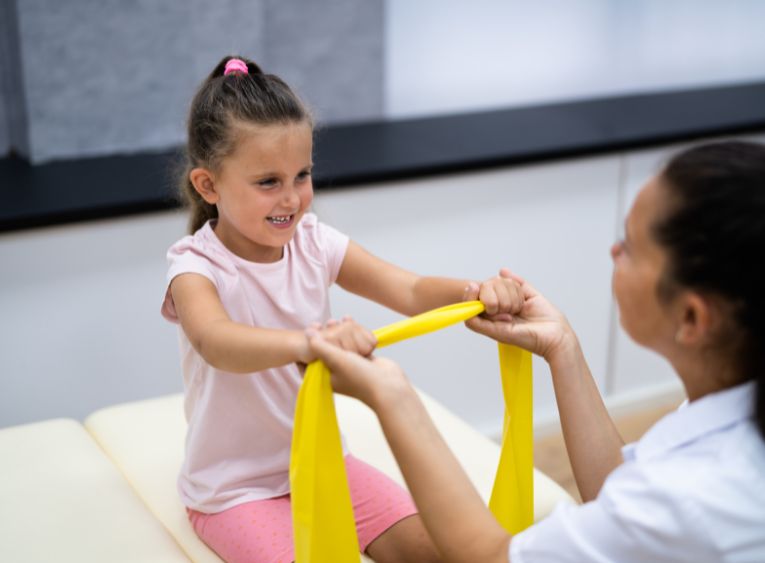

Symptoms of Dyskinesia in Children
A child with dyskinesia may exhibit various symptoms, including:
- Facial grimacing
- Raising and lowering of the shoulders
- Extending and bending fingers and toes
- A restless or jittery demeanor
- Jerky or uncoordinated movements during activities
How Can Physiotherapy Help with Dyskinesia?
Physiotherapy can be beneficial for children experiencing dyskinesia. Treatment approaches include:
- Passive Joint Movements: These can help maintain movement in the child’s limbs, making movement easier.
- Targeted Exercises: Designed to improve control over limbs, these exercises can progress to practicing normal movement patterns, facilitating easier achievement of functional movements.
Request an appointment to support
your child’s functional skills and daily living abilities.
Our Pediatric Physiotherapy center in Abu Dhabi is dedicated to enhancing motor skills, sensory processing, and
overall independence, empowering children to engage more confidently and effectively in everyday activities!
Schedule a consultation with Perfect Balance Pediatric Physiotherapy today and
take the first step toward a more independent and fulfilling life for your child
